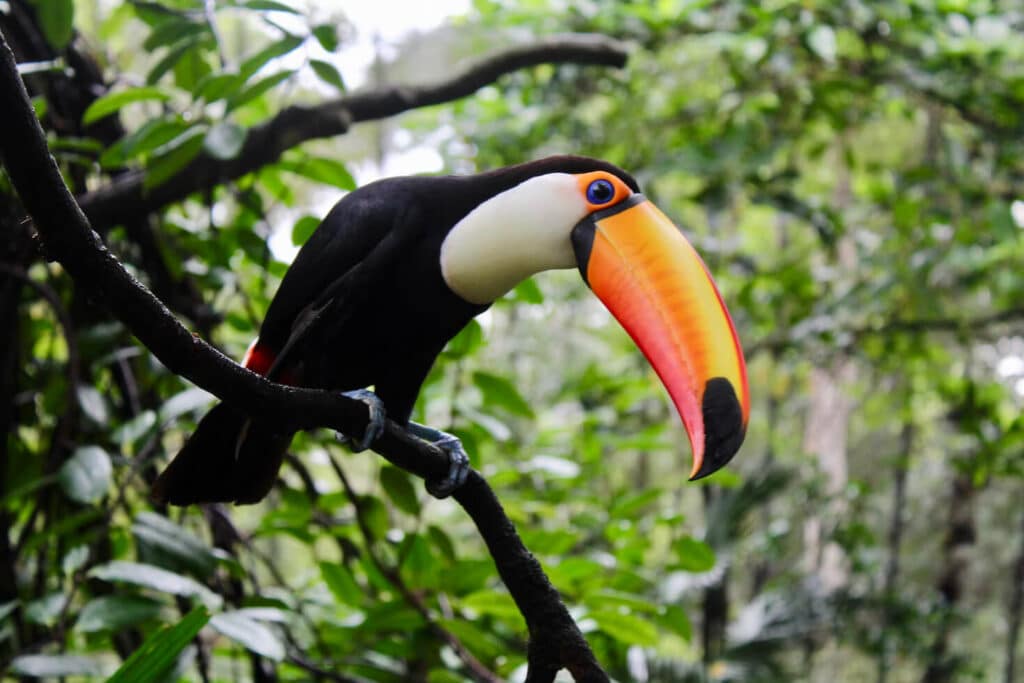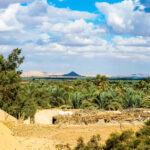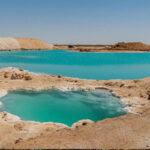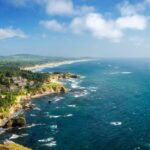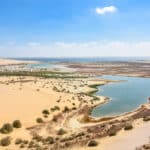Get ready to embark on an exciting adventure as we explore the wildlife and flora around Argentina’s stunning waterfalls. From the agile Guanaco and the gentle Capybara to the vibrant Toucan and the elusive Jaguar, prepare to be mesmerized by the diverse wildlife. Simultaneously, marvel at the range of plant life, including the giant water lily, colorful bromeliads, towering ficus trees, and resilient cacti.
RELATED POST: Complete Guide For Visting Iguazu Falls: Transportations, Tickets And More
Guanaco (Lama guanicoe)

Guanaco, a species of wild camelid native to South America. These fascinating creatures are known for their adaptability and can be spotted around Argentina’s various terrains, from the mountainous Andes to the grassy plains near the waterfalls.
Guanacos are easily recognizable by their light brown coats, white underbellies, and the distinctive grey faces. They stand about 1.2 meters at the shoulder and can weigh up to 140 kilograms. But don’t let their size fool you! Guanacos are known for their agility and speed, capable of reaching up to 56 kilometres per hour to evade predators.
If you’re lucky, spotting a Guanaco near one of Argentina’s waterfalls is an incredible sight. They are often seen grazing on grasses and shrubs, rehydrating from the freshwater streams that feed the waterfalls. These creatures are quite social and usually spotted in small groups called family herds, consisting of a dominant male, females, and their young.
One of the most exhilarating experiences is to witness the ‘alarm call’ of a Guanaco. If a predator like a puma or a fox is spotted, the Guanaco emits a high-pitched, bleating sound that alerts the rest of the herd. It’s an effective survival technique that has ensured their continued existence amidst the circle of life that plays out near Argentina’s waterfalls.
Capybara (Hydrochoerus hydrochaeris)
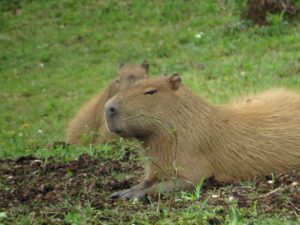
As the world’s largest rodent, the Capybara is an intriguing sight to behold. They can measure up to 1.3 meters in length and weigh as much as 65 kilograms.
Found in abundance near the water bodies that feed Argentina’s waterfalls, these semi-aquatic creatures love to swim and spend a large part of their day in the water. They have a dense, reddish-brown fur which dries quickly and webbed feet, perfect for their lifestyle.
Capybaras are social creatures, often found in groups of 10 to 20, grazing on grasses and aquatic plants. As dusk approaches, you can enjoy the sight of them lounging in the shallow waters, a spectacle that truly captures the essence of the peaceful coexistence of wildlife around Argentina’s waterfalls.
Howler monkey (Alouatta caraya)
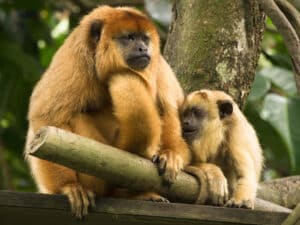
Known for their distinctive loud calls, which can travel three miles through dense forest, The Howler Monkeys are the loudest of all monkeys.
These primates are black or brown and are easily spotted in the trees due to their long tails and bodies. Their diet primarily consists of leaves, fruits, and flowers.
If you hear their howling sounds echoing around the waterfalls, look up, and you might get a glimpse of these fascinating creatures swinging from branch to branch.
Toucan (Ramphastos toco)
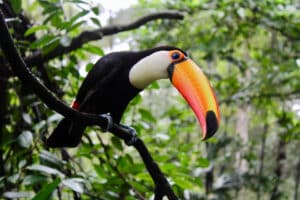
With its oversized, colourful beak and striking plumage, the Toucan is one of the most iconic birds of South America.
You can often spot these birds in the early morning or late afternoon, perched high in trees or flying against the misty backdrop of Argentina’s waterfalls. They feed on fruits, insects, and, occasionally, the eggs of other birds.
Their loud calls, coupled with their vivid appearance, make the Toucan a favourite among birdwatchers and nature lovers. Catching a glimpse of a Toucan in its natural habitat is a sight you won’t soon forget.
Jaguar (Panthera onca)
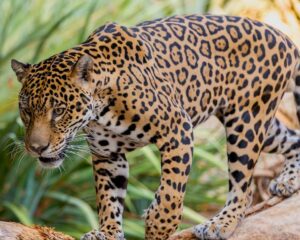
Jaguar is one of the most elusive and majestic creatures of South America. These powerful cats are a symbol of strength and stealth, and spotting one is a rare and unforgettable experience.
Jaguars are primarily found in dense forests and swamps close to water. They are excellent swimmers and often hunt near water bodies, making the areas around Argentina’s waterfalls their ideal habitat.
While sightings are rare, early mornings or late evenings may offer a chance to spot these beautiful creatures from a safe distance.
Victoria amazonica (Giant water lily)
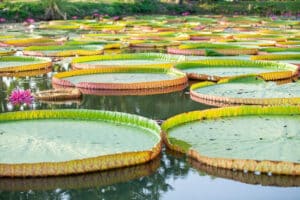
It is impossible not to marvel at the Victoria amazonica, the giant water lily native to South America. These remarkable plants can be found in calm waters near some of Argentina’s waterfalls.
The Victoria amazonica boasts the largest leaves of any water lily, with some reaching up to 3 meters (10 feet) in diameter. The leaves are strong enough to support the weight of a small child, and their impressive size creates a unique visual spectacle.
The giant water lily also produces stunning, fragrant flowers that bloom for just 48 hours. During this short time, the flowers undergo a colour transformation from white to pink or purple, attracting pollinators and delighting observers with their ephemeral beauty.
Bromeliads (Epiphytic plants)
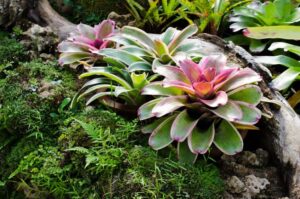
Bromeliads are another fascinating group of plants that one can discover near Argentina’s waterfalls. These epiphytic plants grow on trees or rocks without causing any harm to their hosts. Their unique growth habit enables them to take advantage of the abundant moisture and sunlight in the area.
Many bromeliads have a rosette-shaped structure that collects rainwater and organic debris, creating a miniature ecosystem for various insects and small amphibians. Bromeliads often display vibrant colours and intricate patterns, adding an extra layer of visual interest to the lush surroundings.
Ficus trees (Fig trees)
Ficus trees, commonly known as fig trees, are another essential component of the ecosystems near Argentina’s waterfalls. These trees are known for their elaborate root systems, which can extend above the ground, creating a distinctive appearance.
Ficus trees are also a critical food source for many animals, as they produce figs that support a wide variety of fauna, including birds, mammals, and insects.
In addition to their ecological importance, ficus trees are also culturally significant in many parts of the world and have been used for various purposes, ranging from traditional medicine to religious symbolism.
Cacti (Desert plants)
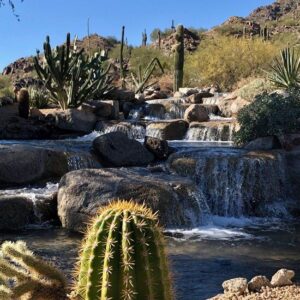
While cacti might not be the first plants that come to mind when thinking about Argentina’s waterfalls, they can be found in the drier areas surrounding some of these natural wonders. Cacti are well-adapted to arid environments, boasting unique features such as thick stems, spines, and shallow root systems that enable them to store water and withstand prolonged periods of drought.
Cacti in the vicinity of Argentina’s waterfalls add to the region’s biodiversity and provide food and shelter for various desert-dwelling animals. Some cacti also produce striking flowers that attract pollinators, contributing to the interconnectedness of the ecosystems near Argentina’s waterfalls.
Conclusion
Our virtual journey of wildlife spotting near Argentina’s waterfalls has introduced us to a vibrant symphony of life that plays out in these majestic landscapes. Through the eyes of adventurers and nature enthusiasts, we’ve observed and appreciated the marvels of the Guanaco, Capybara, Howler Monkey, Toucan, and Jaguar. Simultaneously, we’ve discovered the rich tapestry of plant life, from the Giant Water Lily and Bromeliads to the towering Ficus Trees and resilient Cacti.
Each encounter, each sighting, has opened our eyes to the beauty and complexity of nature, reminding us of our role in its preservation. As we venture into such biodiverse regions, let’s remember to tread lightly, respect the habitats of these magnificent creatures and plants, and carry with us the sense of wonder and knowledge these experiences offer.

